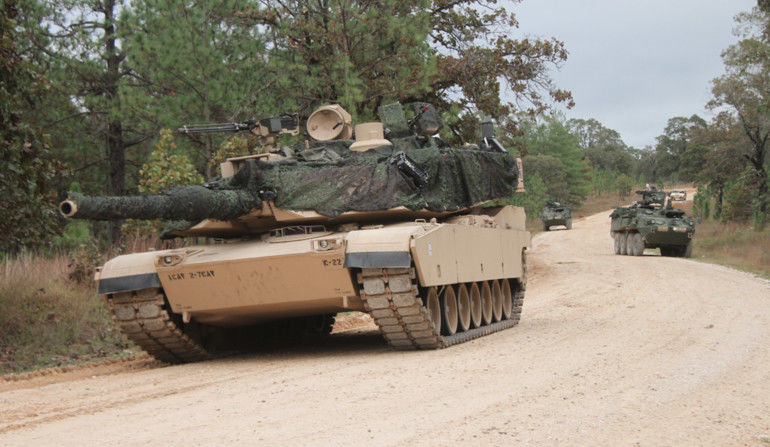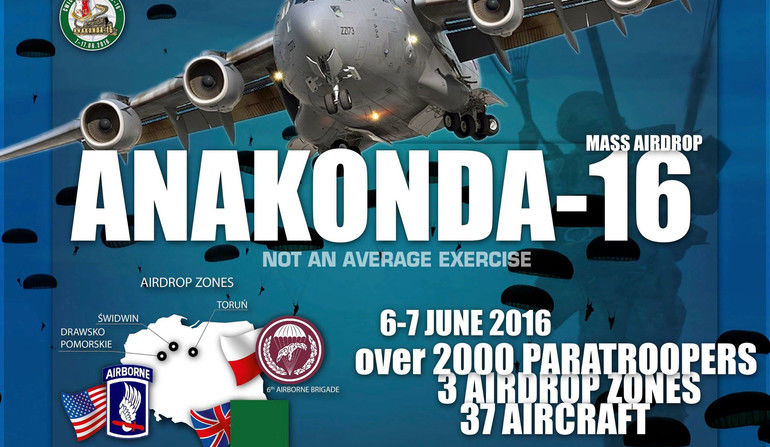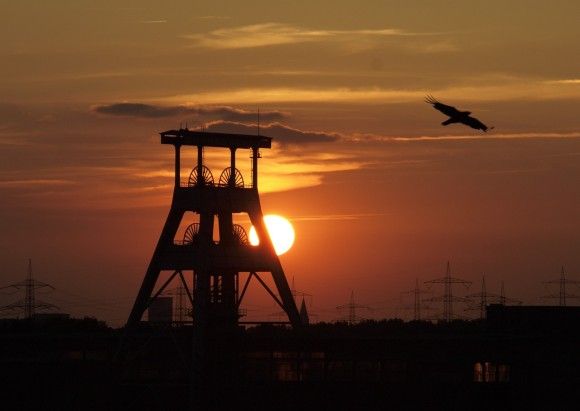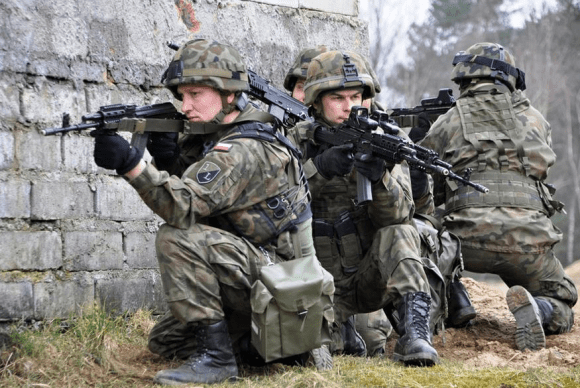Armed Forces
Anakonda: Global Projection of the US Power in Poland
An airdrop operation, involving paratroopers of the US, British and Polish Armies took place in Torun, within the framework of the Anakonda-16 exercise, in conjunction with a mission to take over a bridge over the Vistula river. The event may be interpreted as verification and demonstration of global power projection capacity and interoperability capabilities which are in possession of the US forces. USA has an ability to deploy its quick reaction forces within 96 hours from the moment when a threat emerges, even in circumstances, within which the adversary employs significant countermeasures.
The Anakonda exercise, besides the Poles from the 6th Airborne Brigade, and British soldiers hailing from the 16th Air Assault Brigade, also involves the American troops coming from the 82nd Airborne Division, directly deployed to Poland from CONUS. The above fact is significant, since the 82nd Airborne unit is the core of the rapid reaction forces component of the US military. This component is able to attain readiness to be deployed anywhere in the world within 96 hours.
According to the assumptions, a brigade of the 82nd Division takes a permanent role of a “Global Response Force”, maintaining the highest level of combat readiness. Within 4 days from receiving the orders, the whole unit is expected to be deployed to the area of operations. The first battalion achieves the capacity above within 18 hours.
The US rapid response brigade does not include solely the paratroopers, as it is being supported by a number of other units. Within the framework of the Global Response Force element, small mechanized and armoured units also maintain their readiness (with Abrams main battle tanks, Bradley IFVs and Stryker APCs), along with Army Aviation units using the Apache helicopters or even air defence elements equipped with the Avenger VSHORAD systems, missile defence systems (Patriot), MALE class UAV systems or HIMARS rocket artillery systems.
All of the assets above are to make it possible to obtain a capacity to carry out a wide spectrum of operations, from crisis response and humanitarian initiatives, to forced entry, with landing operations conducted within the territory taken by the enemy and with subsequent combat operations within that area, maintaining the control in the region, until the main forces arrive. This element is being trained in Torun, where the Polish, British and US paratroopers were to take over a bridge and defend it, until an element of the 2nd Cavalry Regiment with Stryker APCs provided relevant support.

The available information suggests that a significant part of the Global Response Force component is going to be deployed to Poland, however the above does not concern all of the elements of that formation. This does not change the fact that Anakonda, and involvement of the QRF elements, constitutes a relevant test of the deployment and collaboration capabilities which remain at disposal of the allied forces.
The above makes it possible to demonstrate a deployment of support units, directly from the United States of America, which is the basic principle adopted in case of the Global Response Force. The dropped elements, in a multinational setting, immediately became a part of operations, the objective of which would be to maintain control over the taken area, until the moment when the main forces arrive. The Americans used the C-17 Globemaster III aircraft, the British utilized the C-130 Hercules airframes, while the Poles employed the CASA C-295 aircraft.
Global Response Force can easily be considered to be a capacity which is unique within the NATO framework. Here, we mean rapid deployment of a formation so large, in a manner which is so quick, and dropping that unit with the additional support elements present. Only the US is in possession of such capacity. The deployment is usually realized by air transport, directly from CONUS. This is possible solely thanks to the fact that the Americans have land units with a high degree of readiness which remain at their disposal, along with a fleet of transport aircraft, ready to conduct airdrops globally.
According to the statements made by the US Secretary of Defence, Ashton Carter, the Americans assume that they are going to provide assistance to the European NATO VJTF (“Spearhead”) component, also within the scope of the strategic airlift capacity. VJTF element differs from the Global Response Force unit, due to its multinational profile, it also includes more heavy, armoured or mechanized units.
Obviously, in conditions when the enemy’s countermeasures are intensively employed (including a situation in which the allied territory is within the range of the air defences of the adversary) employment options pertaining to the Global Response Force are somewhat limited. The unit cannot be seen as a substitute of the regular armoured or mechanized units. This is particularly visible in significant involvement off the 1st Armoured Brigade of the 3rd Division in the Anakonda exercise. In cases when independent operations would be carried in a long term, the element would have to face the heavy units of the enemy, however it is not destined to carry out such operations.

On the other hand, such unit has significant capacity to act against hybrid threats or support an allied defensive operation. In most of the cases this concerns the light infantry, well equipped, having a lot of anti-tank weaponry in its inventory. RAND report referring to a defensive operation concerning the Baltic States indicated that formations as such could, in a situation when the threat level is high, effectively support the defensive operations within urbanized areas. Nonetheless, this obviously brings a great risk of collateral damage.
The ability to use the Global Response Force component is a great asset for an allied commander, should a need arise to carry out a defensive operation. The unit may become involved within a few days following the relevant decision taken not by the North Atlantic Council (as it happens in case of the VJTF unit) but by the US government, which is burdened by a lesser political risk. Obviously, collective defence is only one of the tasks realized by the Global Response Force, as the element was also involved in humanitarian initiatives, such as the one following the Haiti earthquake, back in 2010. The above makes us realize that a dangerous situation may emerge, should numerous threats be present – a risk of the forces being scattered and distributed, to act against multiple threats, may arise.
The Anakonda exercise scenario presented by General Tomaszycki at the Parliament assumes that deployment of forces and demonstration of capabilities, within an environment featuring hybrid threats, is realized – and this happens long before an open conflict even begins. GRF could be used in a similar way, should a real threat emerge. In the light of its rapid response capacity, the unit may be deployed even before the battle starts, which has a beneficial impact on power balance (from the allied standpoint), also assuring that a higher deterrence potential is achieved.
Antoni Macierewicz, Polish Minister of Defence, stated that the Torun operation is going to be the largest landing operation in the history of independent Poland. The exercise fits well in a wider context formed by the Anakonda scenario, since several elements and stages of the operation are involved, from US airlift-based deployment, through drop, finishing with taking over the control over the selected area, and maintaining it, until the main forces arrive. One should remember though that besides the GRF units, NATO (including the European states) shall expand its capacity to rapidly prepare heavy armoured, mechanized or artillery units for use, since these elements will become the core of the potential defensive operation.




